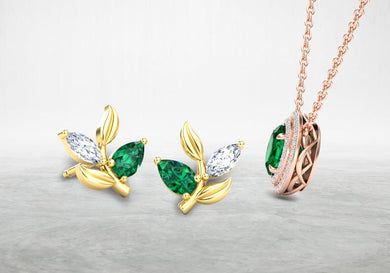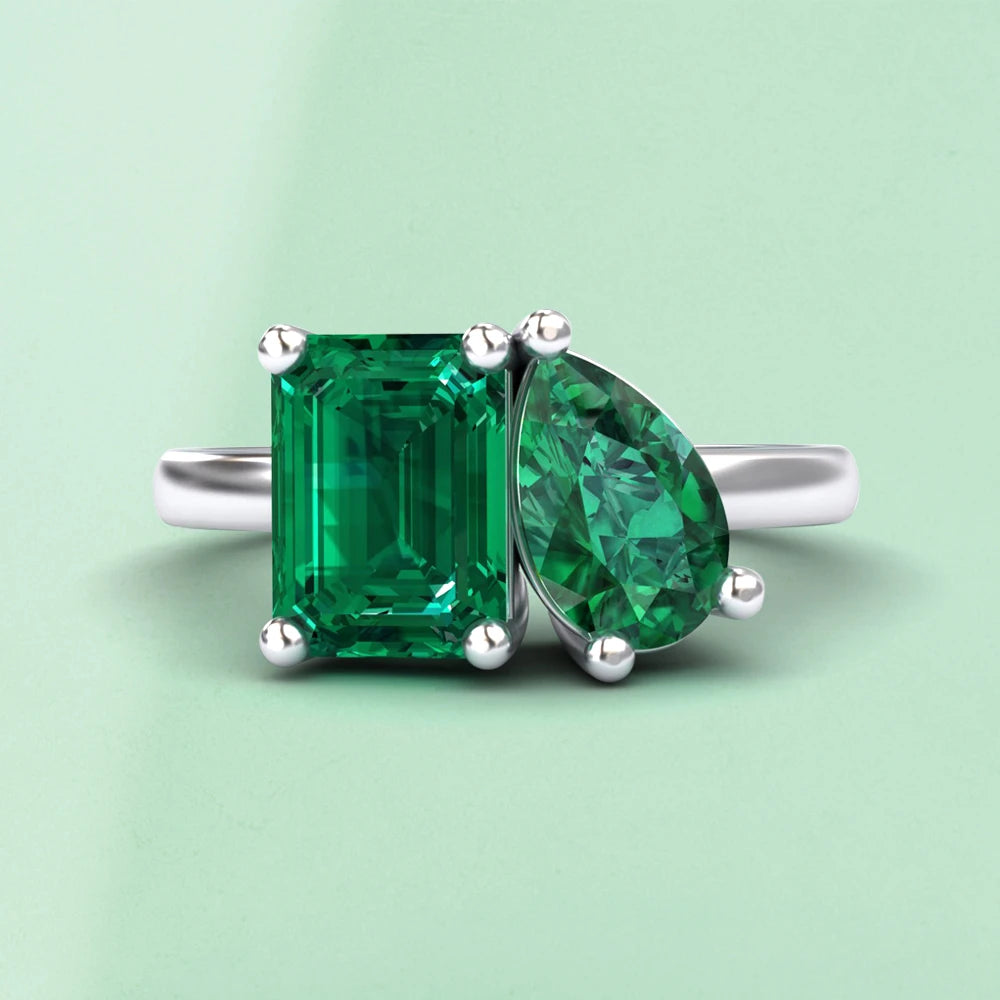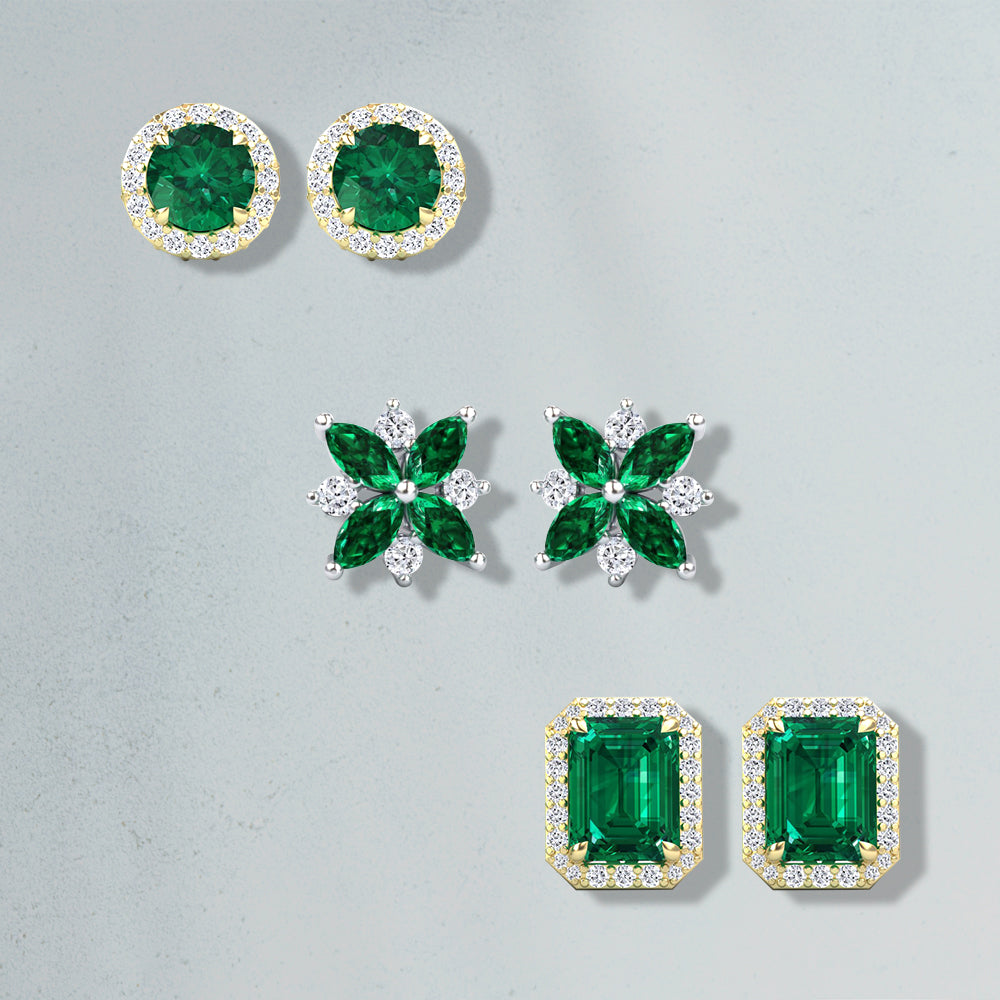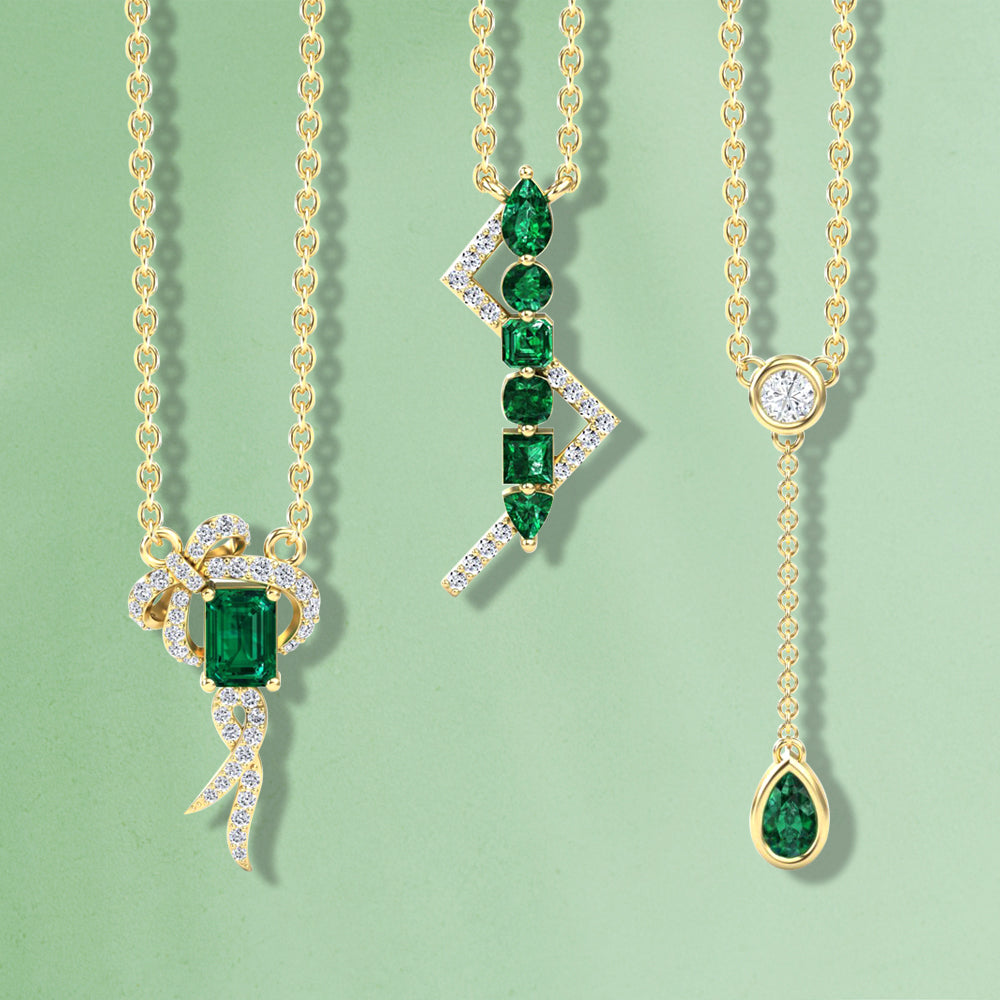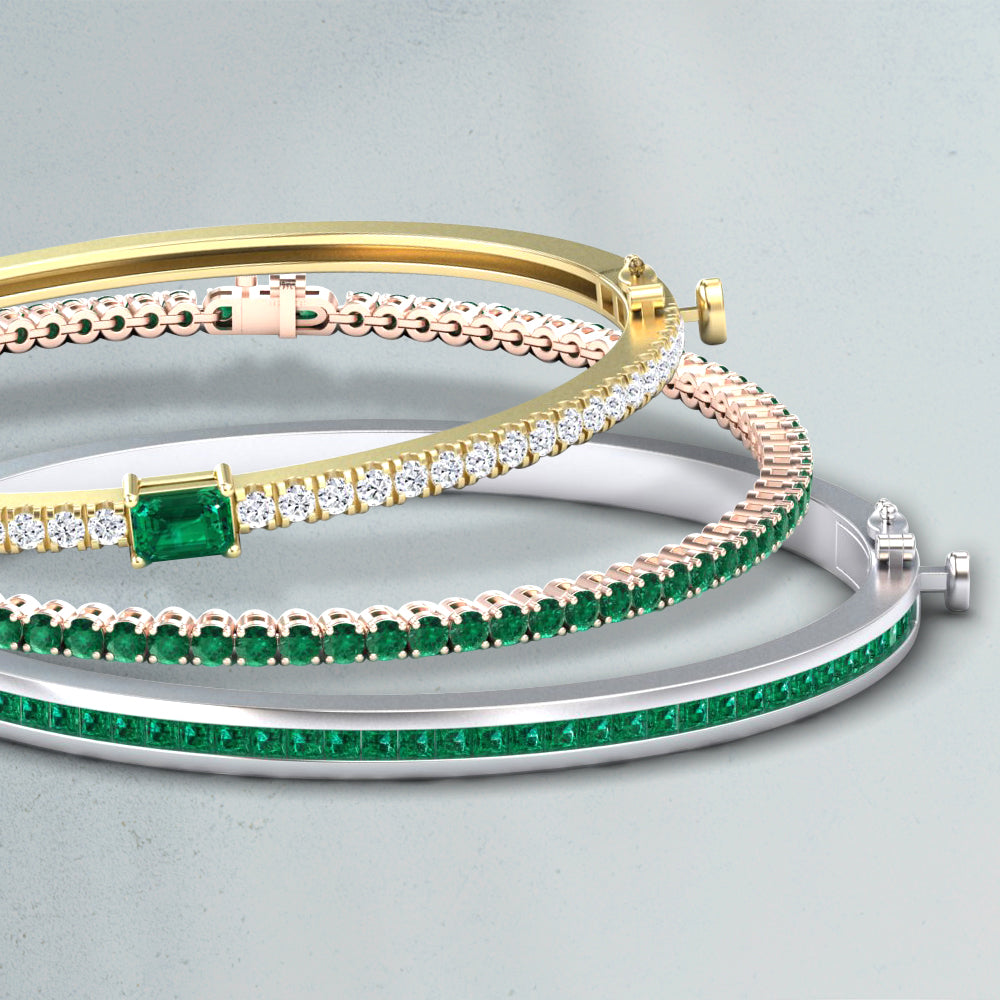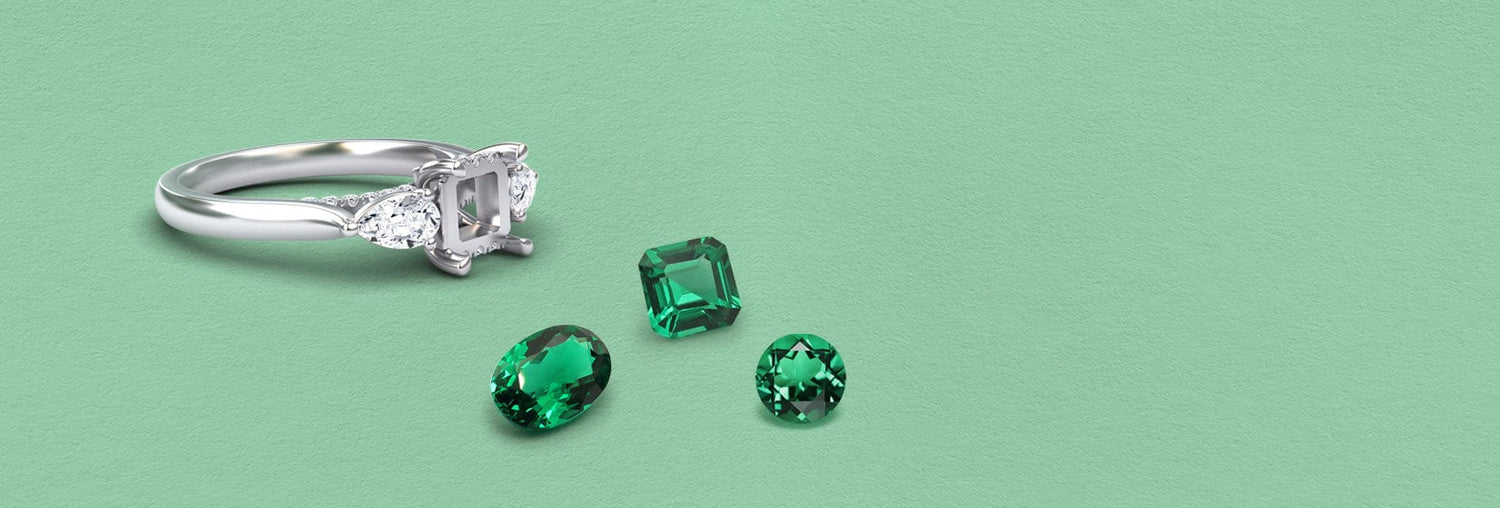Shop By Category
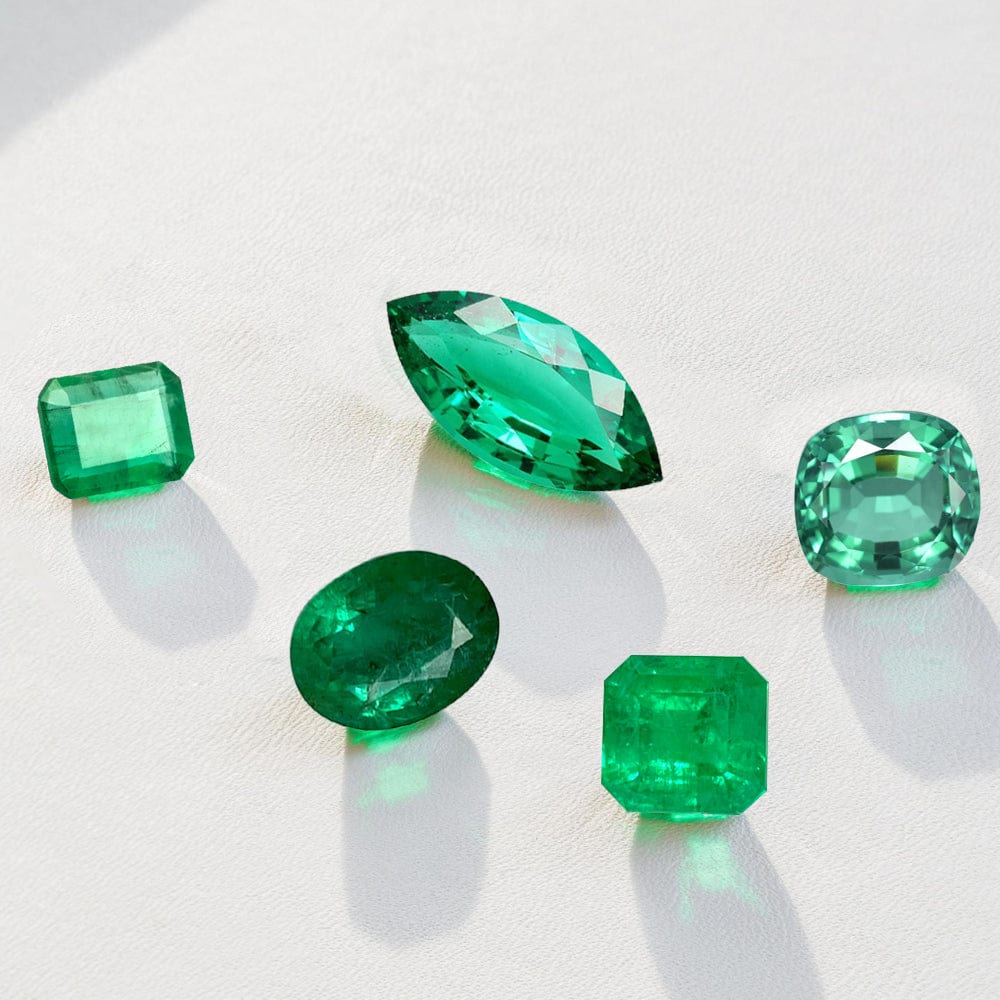
Colors of Emerald and Its Origins
Emeralds are prized for their lush green hues, ranging from soft pastel green to deep, vivid bluish-green—the most valuable being intensely saturated with minimal inclusions. Their rich color comes from trace amounts of chromium and vanadium within the beryl crystal. While inclusions are common in emeralds and often referred to as the stone’s “garden,” they are embraced as part of its natural beauty. Major sources include Colombia, Zambia, and Brazil, with Colombian emeralds especially renowned for their exceptional quality and vibrant color.
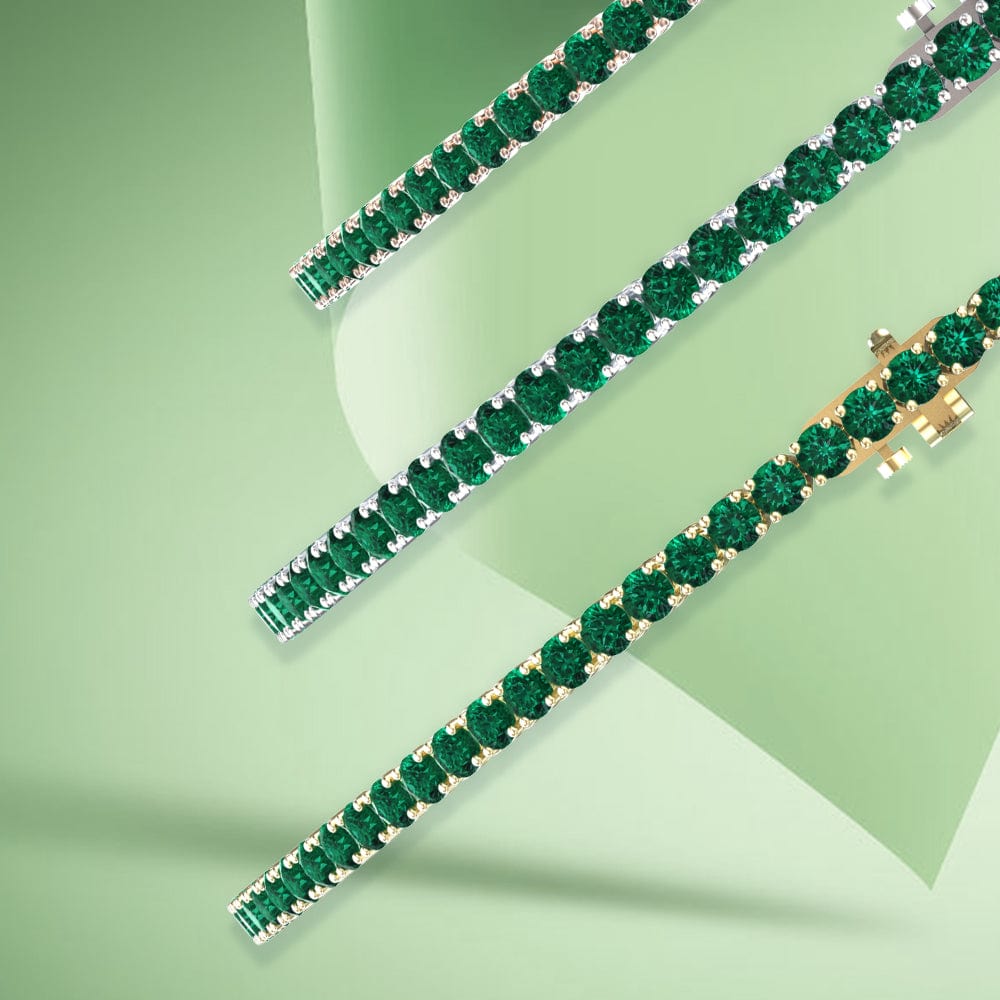
Taking Care of your Emerald Jewelry
Emerald jewelry requires gentle care, as emeralds are softer and more prone to inclusions than many other gemstones. Clean them using lukewarm water, mild soap, and a soft cloth—avoid ultrasonic or steam cleaners, which can damage the stone. It's best to store emerald pieces separately in a padded box to prevent scratching. Keep them away from harsh chemicals, perfumes, or sudden temperature changes. Regular, gentle cleaning will help maintain their vibrant color and brilliance.
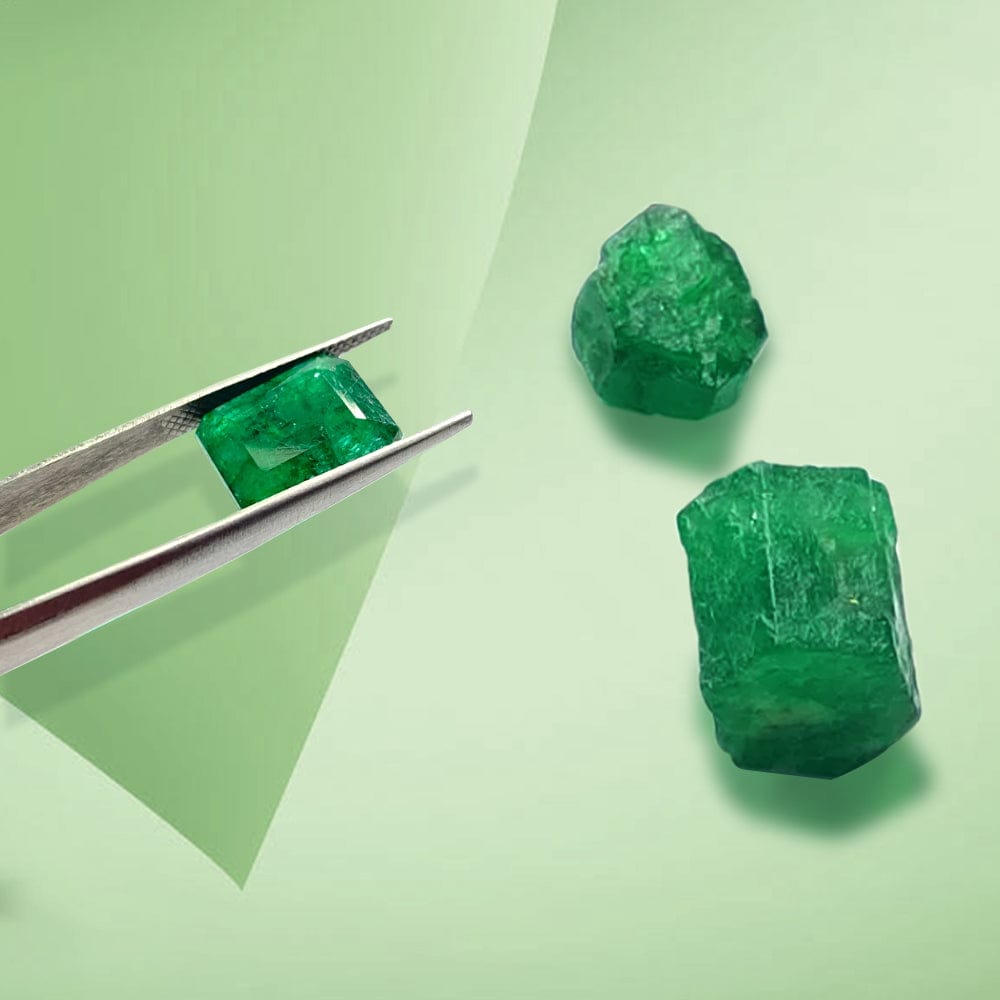
Emerald Gemstone Meaning
Emerald is a gemstone symbolizing love, renewal, and wisdom, long cherished for its deep green color and spiritual significance. Often associated with the heart chakra, it is believed to promote emotional balance, harmony, and compassion. In ancient cultures, emeralds were thought to bring foresight, good fortune, and protection. As the birthstone for May, emerald represents growth, rebirth, and enduring love. Its timeless beauty carries both elegance and meaning.
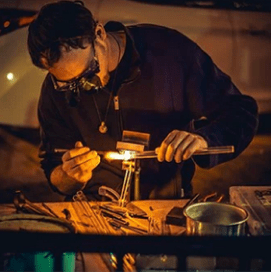


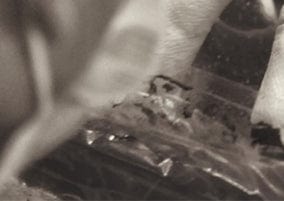

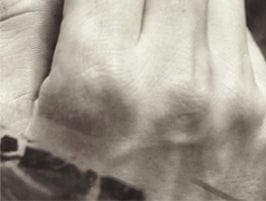

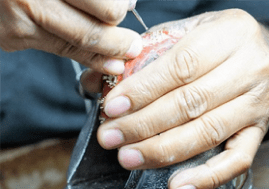


Trust and Transparency while being Sustainable
Stress Free Shopping with full transparency about cost, metals, and our carbon foot print
Emerald FAQs
What is fine jewelry?
What is fine jewelry?
Fine jewelry refers to jewelry crafted from precious metals like gold, platinum, or sterling silver and often set with genuine gemstones such as diamonds, sapphires, rubies, or emeralds. Unlike fashion or costume jewelry, fine jewelry is designed to be durable, timeless, and valuable, making it suitable for everyday wear as well as special occasions. It often holds both emotional and financial value, passed down as heirlooms through generations. Because of its craftsmanship and quality, fine jewelry requires proper care and maintenance to preserve its brilliance. It is considered an investment in beauty, luxury, and meaning.
What is the rarest gemstone?
What is the rarest gemstone?
The rarest gemstone in the world is often considered to be painite, a deep brownish-red crystal that was once so scarce only a handful of specimens existed. Other gems like red beryl, alexandrite, and musgravite also rank among the rarest due to their extreme scarcity and limited sources. Rarity depends not only on how hard a gem is to find in nature but also on the quality of color, clarity, and size. Because of their uniqueness, these gemstones often command extraordinary prices in the market. Collectors and jewelry enthusiasts treasure them for their beauty, mystery, and exclusivity.
How are gemstones cut?
How are gemstones cut?
Gemstones are cut through a precise process that transforms rough crystals into sparkling jewels. First, the stone is carefully examined to decide the best shape and orientation for maximizing color, brilliance, and size. It’s then sawed into a workable piece, shaped using grinding wheels, and refined with different abrasives. Facets are added with exact angles to reflect light beautifully, enhancing the gem’s fire and brilliance. Finally, the stone is polished to a mirror-like finish, ready to be set into jewelry. This art of gemstone cutting, called lapidary, requires both skill and patience.
Where can you buy gemstones?
Where can you buy gemstones?
You can buy gemstones from reputable jewelry stores, both online and offline, that specialize in certified gems. Many people also purchase from gemstone dealers, auction houses, or gem shows, where a wide variety of stones are available. Online marketplaces can offer convenience and selection, but it’s important to look for certification and return policies to ensure authenticity. Some travelers buy gemstones directly from mining regions or local artisans, though this requires expertise to avoid imitations. The key is to buy from a trusted source with transparent information about the gem’s origin, quality, and value.


